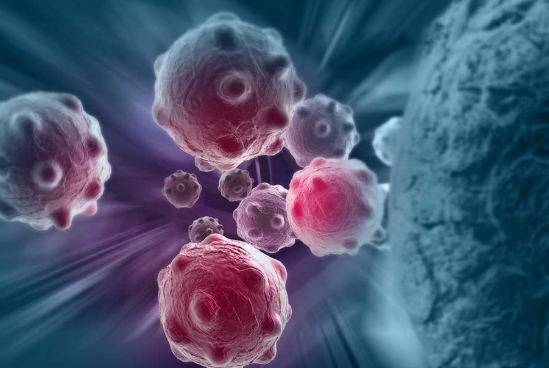자료실
|
[ENZO TechNote] What Tools are Available for Immuno-Oncology Research?
|
|
|---|---|
|
작성일 2018-06-28 · 조회 145
Imuno-oncology(anti cancer immunotherapy)는 암 치료를 위해 환자 자신의 면역계를 사용하는 것을 말합니다. ENZO lifscience는 immuno-oncology 분야에 관련한 다양한 antibody, ELISA kit, recombinant protein 등을 제공하고 있습니다. 자세한 내용은 아래를 참고해 주시길 바랍니다.
Fighting Cancer with the Immune SystemImmuno-oncology, also named cancer immunotherapy, refers to the use of a patient’s own immune system for the treatment of cancer. Over the past decade, research about the role of the immune system in controlling tumorigenesis and tumor progression showed that tumor-infiltrating lymphocytes (TILs) in cancer tissue, and in particular, the presence of CD8+ cytotoxic T cells and the ratio of CD8+ effector T cells/CD4+/forkhead box P3+ regulatory T cells (Tregs), seem to correlate with improved prognosis and long-term survival in many solid tumors. However, activation of T cells requires two signals: 1) recognition of the antigenic peptide/major histocompatibility complex (MHC) by the T cell receptor (TCR) and 2) antigen-independent co-stimulation induced by interactions between co-signaling molecules expressed on antigen-presenting cells (APCs) and their T cell-expressed receptors. T cell activation can also be negatively regulated by co-inhibitory molecules present on APCs, called immune checkpoints, which represent a crucial mechanism for maintaining self-tolerance and regulating the duration and magnitude of immune responses under normal conditions. T cells with a diverse TCR repertoire permanently circulate in the body patrolling for evidence of foreign peptides presented on the surface of cells because of infection or cancer. When a T cell encounters a tumor antigen, this normally results in activation, clonal proliferation/expansion, and a cytolytic response. However, tumor immune interactions may be dysfunctional because of impaired antigen recognition or a highly immunosuppressive microenvironment the tumor creates which eventually leads to immune evasion.
Targeting Immune Tolerance via Co-Inhibitory Immune CheckpointsPD-1/PD-L1 axis: PD-1 is a co-inhibitory receptor that is highly expressed on activated T cells, B lymphocytes, natural killer (NK) cells, and myeloid-derived suppressor cells (MDSCs). In the effector phase of the immune response, PD-1 expression is induced by TCR-antigen engagement and by common γ-chain cytokines like interleukin (IL)-2, IL-7, IL-15, and IL-21. PD-1 has two known ligands, PD-L1 and PD-L2, and their engagement leads to effector T-cell exhaustion and apoptosis. In addition, PD-1 engagement with PD-L1 on tumors may render the tumor cells resistant to lysis by cytotoxic T-lymphocytes (CTLs) and Fas-induced apoptosis. PD-L1 expression/upregulation, e.g., by the activation of key oncogenic pathways, including phosphoinositide 3-kinase (PI3K) and mitogen-activated protein kinase (MAPK), has been documented in various tumors in response to the presence of antitumor immune pressure or a proinflammatory milieu. This upregulation is mediated by proinflammatory cytokines including interferon gamma (IFN-γ) and IL-4 through STAT1 and IFN regulatory factor-1. There are several monoclonal antibodies targeting either PD-1 or PD-L1 in use for the treatment of multiple solid tumors but melanoma and nonsquamous non–small cell lung cancer (NSCLC) patients appear to particularly benefit from these PD-1/PD-L1 axis blockers. LAG-3: Belonging to the Ig superfamily, LAG-3 is a T-cell co-inhibitory transmembrane receptor found on activated T cells (CD4+ and CD8+) and NK cells. It binds to the MHC class II (MHC-II) molecule and also interacts with TCR/CD3 complexes on T cells, inhibiting the calcium response to CD3 stimulation. Blockade of LAG-3 promotes T-cell activation, proliferation, and effector function. TIM-3: TIM-3 is produced on IFN-γ–secreting T helper 1 CD4+ and CD8+ T cells and on T helper 17 cells. TIM-3 expression is upregulated by antigenic stimulation and in response to proinflammatory cytokines. Galectin-9 is the proposed ligand for TIM-3, and interaction with TIM-3 induces tolerance and T-cell exhaustion. In murine models, combined treatment with anti–Tim-3 and anti–PD-L1 antibodies resulted in considerable antitumor immune responses and reduction in tumor size compared to either treatment alone. CTLA-4: In the priming phase of antigen presentation and following TCR-peptide complex engagement, surface CTLA-4 acts as a negative regulatory receptor of T cells. The level of CTLA-4 is variable across T-cell subtypes and is regulated by the calcium/calcineurin-induced tranion factor NFATc1. CTLA-4 is a homolog of CD28, which is a key costimulatory receptor on T cells, and hence it competes for the binding of the same ligands, CD80 and CD86. However, CTLA-4 has a higher affinity than CD28 for both ligands, resulting in interference with the immune synapse and T-cell inactivation. Therapeutic anti–CTLA-4 monoclonal antibodies have shown remarkable clinical activity in advanced melanoma by restoration of the CD28-dependent activation on T cells and promoting depletion of Tregs in the tumor microenvironment. Enhancing Immune Responses by Costimulatory Checkpoint PathwaysGITR: Similar to all other costimulatory receptors mentioned below, GITR is a member of the tumor necrosis factor receptor superfamily. It can be found on the surface of multiple types of immune cells, including Tregs, effector T cells, B lymphocytes, NK cells, and activated dendritic cells. GITR activation increases the function of T cells, NK cells, APCs, and B lymphocytes and enhances CD4+ and CD8+ T cell proliferation in conjunction with TCR stimulation and reduces Treg mediated suppression. GITR agonistic antibodies in combination with PD-1 blockade were already demonstrated to be synergistic in murine models. If you want to this Booklet, please contact to Dong-in(click!).
|
|
| 첨부파일 | |
| ▲ 다음글 | [ENZO] Immunology 2018-07-03 |
|---|---|
| ▼ 이전글 | [Bethyl] Hypoxia Signaling: HIF1-alpha & HIF2-alpha 2018-06-27 |










